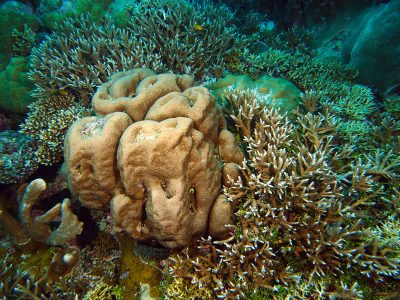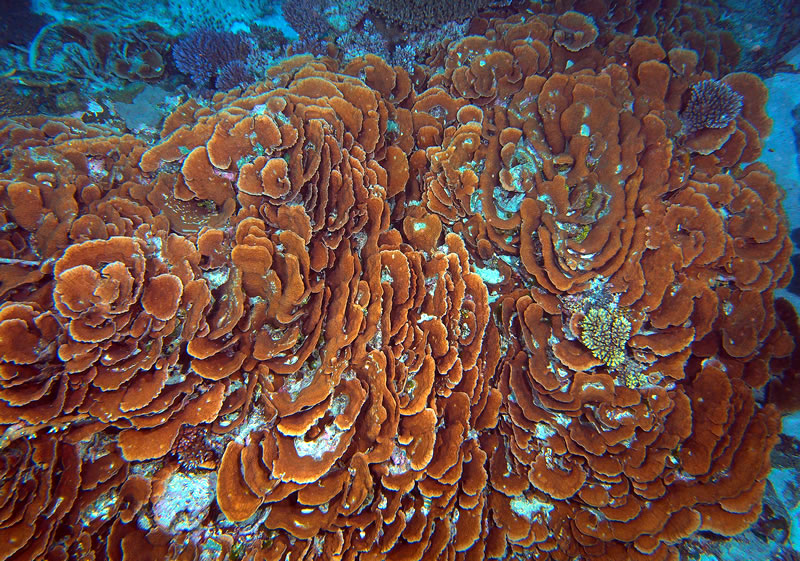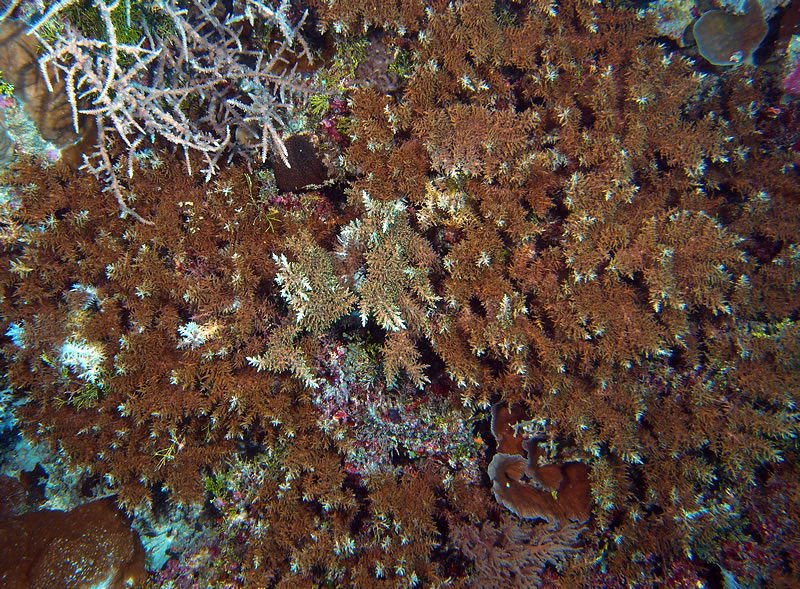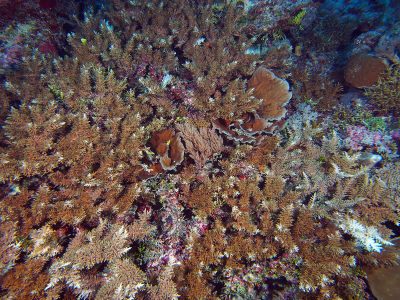Expedition Log: Palau – Day 5
Usually we find the most delicate corals in protected deeper lagoonal waters. Species such as Anacropora, a cousin of Acropora which forms bushes of long spindly branches, up to a meter tall but only a few millimeters thick, are common in sheltered areas. You expect the opposite on windward fore reef communities, such as those we’ve been surveying off the southwest side of Palau. Usually only a few species can tolerate those conditions – Boulder-like massive Porites colonies, brain corals, star corals and other faviid corals, encrusting and submassive corals, and branching and columnar corals that have robust, thick branches.

A delicate colony of Anacropora from a lagoon in the Rock Islands

Thickets of staghorn coral among a massive gardinoseris colony
Yesterday we had a 3 m swell and huge waves building up on the reef slope and crashing onto the reef crest. Yet underwater, once you swam below 10 m it was calm and clear. The reef framework was built by hemispherical Porites lobata colonies, something we’ve seen on many Indo-Pacific reefs. But in between these corals were dense thickets of fragile branching corals – several species of staghorn corals, bottlebrush Acroporids, and spiky Seriatopora colonies. Intermixed among these were coalescing mounds of foliaceous and plating species, such Leptoseris yaebi.

Foliceous colony of Leptoseris yaebi


Bottlebrush Acropora: A 1m-wide patch (left) and a thicket with plates of Merulina sheet coral (right)
(Click-thru on images for greater detail.)
The thickets of branching coral continued to 30 m, but I also found large stands of a very delicate type of lettuce coral called Leptoseris papyracea. The highly contorted branches were no more than a few centimeters each, yet colonies were several meters across. One of the ways these corals manage to survive is that that they form fairly low relief stands, only 5-15 cm tall, tucked between the larger massive corals. In this way they stay out of the full force of the waves and swell and can flourish on these reefs, covering extensive areas of the bottom.


Delicate lettuce corals, Leptoseris papyracea and Leptoseris explanata
(Click-thru on images for greater detail.)
Photos by Andrew Bruckner.


